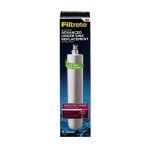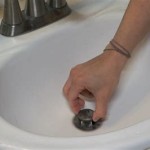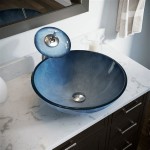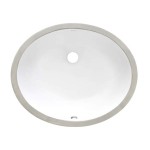Drain Boards For Kitchen Sinks: A Comprehensive Guide
The kitchen sink is a central hub of activity in any household, serving as the focal point for food preparation, dishwashing, and various other tasks. Maintaining a clean and organized sink area is crucial for both hygiene and efficiency. One often overlooked but highly practical accessory for kitchen sinks is the drain board. A drain board provides a dedicated space for wet dishes, utensils, and produce to air dry, preventing water from pooling on countertops and reducing the risk of bacteria growth. This article explores the different types of drain boards available, their benefits, key considerations when choosing one, and how to properly integrate them into a kitchen sink setup.
A drain board is essentially a flat, usually slightly angled, surface designed to sit next to a kitchen sink. Its primary function is to provide a space for freshly washed items to drip dry. This prevents the need to immediately towel-dry everything, saving time and effort. Drain boards are typically made from materials that are water-resistant and easy to clean, such as plastic, stainless steel, silicone, and even wood treated with water-resistant coatings. They often feature ridges or grooves to facilitate water runoff, channeling the water directly back into the sink.
The evolution of the drain board reflects changing kitchen design trends and a growing awareness of hygiene and space optimization. Early versions were often simple, utilitarian affairs, frequently incorporated directly into the countertop material. Modern drain boards, however, come in a wide array of styles, sizes, and materials, catering to diverse needs and preferences. Some are designed to be permanently integrated into the sink itself, while others are portable and can be easily moved or stored. The increased focus on aesthetics has also led to the development of drain boards that seamlessly blend with various kitchen décor styles.
Benefits of Using a Drain Board
The advantages of incorporating a drain board into a kitchen sink setup are numerous and contribute significantly to a more organized and efficient workspace.
Improved Hygiene: Perhaps the most important benefit is the improved hygiene. Allowing dishes to air dry on a drain board significantly reduces the risk of bacterial contamination compared to drying them with a dish towel. Dish towels, if not frequently washed and properly dried, can harbor bacteria and mold, which can then be transferred to the dishes. A drain board allows water to evaporate naturally, minimizing the opportunity for microbial growth. The design of most drain boards, with their angled surfaces and grooves, further promotes air circulation, accelerating the drying process and inhibiting bacterial proliferation.
Countertop Protection: Drain boards protect kitchen countertops from water damage. Constant exposure to water can lead to staining, warping, and even mold growth, especially on porous materials like wood or laminate. A drain board acts as a barrier, catching the dripping water and channeling it directly back into the sink. This is particularly important for countertops made from materials that are susceptible to water damage. By preventing water from pooling on the countertop, the drain board helps to maintain the integrity and appearance of the kitchen workspace for an extended period.
Increased Efficiency: Drain boards streamline the dishwashing process. Instead of immediately towel-drying each item, washed dishes can be placed on the drain board to air dry naturally. This frees up time and allows for multitasking, such as preparing other parts of a meal or cleaning up other areas of the kitchen. For households with multiple members, a drain board can significantly reduce the workload associated with dishwashing. It also eliminates the need for constantly changing dish towels, reducing laundry frequency and saving energy.
Space Optimization: In smaller kitchens, drain boards can be invaluable for maximizing space utilization. They provide a dedicated area for drying dishes without taking up valuable countertop space. Many models are designed to be collapsible or foldable, allowing them to be easily stored when not in use. Some drain boards are even designed to fit directly over the sink, providing additional countertop space while still allowing dishes to air dry. This is particularly useful in apartments or homes with limited kitchen space.
Types of Drain Boards
The variety of drain boards available caters to different kitchen layouts, aesthetic preferences, and functional needs. Understanding the different types is crucial for selecting the most suitable option.
Standalone Drain Boards: These are independent units that can be placed on any flat surface next to the sink. They are typically made from plastic, stainless steel, or silicone and come in various sizes and designs. Standalone drain boards offer the greatest flexibility, as they can be easily moved or stored as needed. They are a good choice for those who frequently rearrange their kitchen or who need a temporary drying solution.
Integrated Drain Boards: These drain boards are incorporated directly into the kitchen countertop or sink. They are typically made from the same material as the countertop or sink and often feature a seamless design. Integrated drain boards offer a more permanent and aesthetically pleasing solution. They are often found in higher-end kitchens and are ideal for those who prefer a clean, minimalist look.
Over-the-Sink Drain Boards: These drain boards are designed to sit directly over the sink, providing additional countertop space while dishes are drying. They are typically made from durable materials like stainless steel or coated wire and are available in various sizes to fit different sink dimensions. Over-the-sink drain boards are particularly useful in small kitchens where countertop space is limited. They also help to prevent water from dripping onto the countertop.
Roll-Up Drain Boards: These drain boards consist of stainless steel or silicone rods connected by a flexible material, allowing them to be rolled up for easy storage. They can be placed over the sink or on the countertop and are ideal for drying dishes, produce, or even hot pots and pans. Roll-up drain boards are lightweight, durable, and easy to clean, making them a versatile addition to any kitchen.
Collapsible Drain Boards: These drain boards are designed to fold flat for easy storage when not in use. They are typically made from plastic or silicone and are available in various sizes and colors. Collapsible drain boards are a good choice for those who have limited storage space or who only need a drain board occasionally.
Key Considerations When Choosing a Drain Board
Selecting the right drain board involves carefully considering factors such as size, material, design, and ease of maintenance.
Size and Capacity: The size of the drain board should be appropriate for the amount of dishware typically washed. Consider the size of the sink and the available countertop space when determining the ideal dimensions. A drain board that is too small may not be able to accommodate all the dishes, while one that is too large may take up valuable counter space unnecessarily. Also, consider the drainage capacity. A wider drainboard with more grooves and a good angle will allow for faster drainage and less standing water.
Material: The material of the drain board significantly impacts its durability, ease of cleaning, and aesthetic appeal. Plastic drain boards are typically the most affordable option, but they may be less durable than stainless steel or silicone. Stainless steel drain boards are highly durable and resistant to rust and stains, but they can be more expensive. Silicone drain boards are flexible, heat-resistant, and easy to clean, but they may not be as sturdy as stainless steel. Wood drain boards, while aesthetically pleasing, require more maintenance to prevent water damage and bacterial growth.
Design and Functionality: The design of the drain board should complement the overall aesthetic of the kitchen. Consider the color, shape, and style of the drain board and how it will blend with the existing décor. Also, look for features that enhance functionality, such as raised edges to prevent water overflow, angled surfaces to promote drainage, and utensil holders to keep silverware organized. Some drain boards also come with detachable trays to collect excess water, making them even easier to clean.
Ease of Cleaning and Maintenance: A drain board should be easy to clean and maintain to prevent the buildup of bacteria and mold. Choose a material that is non-porous and resistant to stains. Regularly clean the drain board with soap and water and a disinfectant to keep it hygienic. Some drain boards are dishwasher-safe, which can further simplify the cleaning process. Check for any nooks and crannies where food particles or water can accumulate and ensure that these areas are thoroughly cleaned.
Drainage System: The effectiveness of a drain board largely depends on its drainage system. The ideal design should have a well-defined slope that directs water efficiently back into the sink. Ridges and grooves should be deep enough to prevent water from pooling and allow for proper air circulation around the dishes. Examine the drainage spout (if any) to ensure it's the appropriate size and location to effectively funnel water into the sink without causing splashes or overflows.
By carefully considering these factors, individuals can select a drain board that meets their specific needs and enhances the functionality and hygiene of their kitchen sink area.

Soluna Copper Kitchen Sink Removable Drainboard

Stainless Steel Kitchen Sink Open Back Drainboard

What Is A Drain Board Definition Of

54 X 24 Single Bowl Double Drainboard Farmhouse Sink Reion Model Sbdw5424 Etsy

What Is A Drainboard Used For On Kitchen Sink

Cannon Stainless Steel Single Workstation Kitchen Sink With Drainboard Rejuvenation

1140mm Black Quartz Kitchen Sink Double Bowl Drop In With Drain Board Homary

Elkay Lustertone Ss 54 X 22 10 Offset Double Drop In Sink W Drainboard

Kitchen Sinks With Drainboard The Sink Boutique

Old Fashion P0814 Farmhouse Drainboard Sink With Legs







